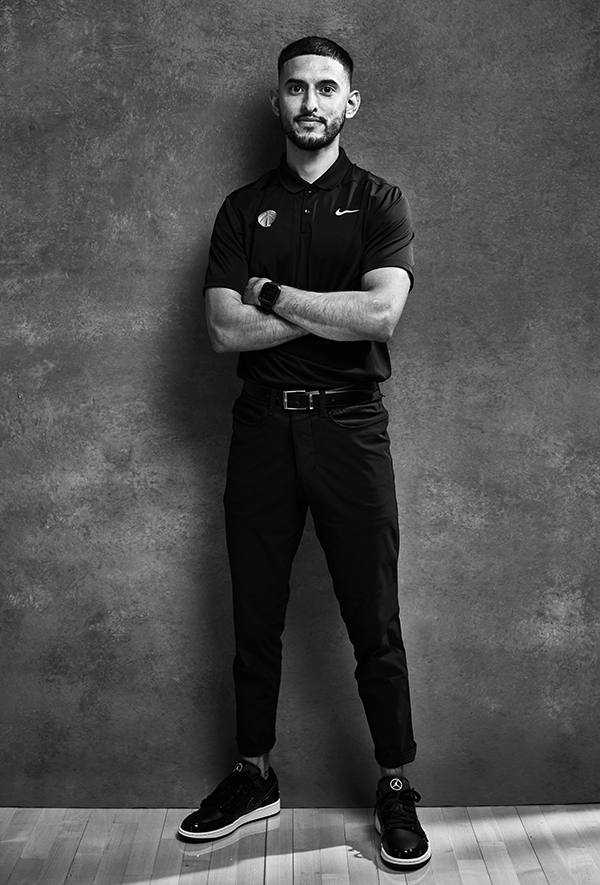By Laurel White
UW–Madison’s Athletic Training program, housed in the School of Education’s Department of Kinesiology, recently marked a quarter century of accreditation by the Commission on Accreditation of Athletic Training Education (CAATE). In the summer 2025 issue of Learning Connections, UW–Madison alumni working as athletic trainers at the highest levels of professional sports shared their insights, experiences, and advice.
UW–Madison alumnus Carlos Bustamante has been an assistant athletic trainer for the NBA’s Washington Wizards for five years. His experiences have included playoff appearances during the pandemic and providing support for one of his all-time favorite players.
When you were a student at UW–Madison, you were a student athletic trainer and worked with several teams. What was that experience like?
The Athletic Training program at UW–Madison tries to give you a taste of everything. My last semester experience with the football team changed everything. I was on track to study physical therapy after graduation, but that experience made me realize I wanted to stick with athletic training. I had my own rehabs, I was seeing the guys every day and developing relationships, and seeing their rehab process from beginning to end. I thought, “I can’t get this anywhere else.”

How does working for a Big Ten team like the Badgers compare to working with a professional team?
The pros don’t have to go to class, so you can really dive into the things that go into making a great basketball player on a minute level. But in the same way these elite pros want to be the best they can be, college athletes want to be the best they can be. I think that helped me make a seamless transition.
You started working for an NBA team in 2020. What’s been your coolest experience so far?
That year, we had Russell Westbrook on our team, and I considered him one of my favorite players to watch. Never in a million years would I have imagined him being someone I would work alongside. I think it was a wake-up call: This player expects so much from himself and in turn from everyone else. I just appreciated watching him work, and I understood when there was a request for certain things being approached with a level of detail or urgency. No one expected more from him than himself and that really carried over. The fact that he was on our team and we made it to the playoffs during that season…we were playing in front of no fans, we were in masks, it was weird times, but I wouldn’t trade it for the world.
What’s it like to work with a player you’re personally such a fan of?
When I first started working, there was this sense of feeling overwhelmed. Now that I’ve been around a bit, I know these are human beings and they have aspirations like I have aspirations. I think it just heightens the goals. There’s a sense that you’re trying to achieve these things together.
What advice would you give to current UW–Madison students who are aspiring athletic trainers?
Remind yourself you’re where you’re supposed to be and don’t feel rushed. Looking back on my path, I think every one of those experiences had to happen for me to feel comfortable where I’m at. I encourage them to take advantage of their current situation and voice the goals they have with their mentors. Also — master the basics. From making an ice bag to taping an ankle, if you can separate yourself from everyone else, you can make a strong impression and players will come back to you. If players think it’s the best ice bag or neatest tape they’ve ever gotten, they’re going to come back. I think of it as my “brand” walking around.
Related: Q&A: UW–Madison alum Geoff Kaplan reflects on decades of athletic training in the NFL